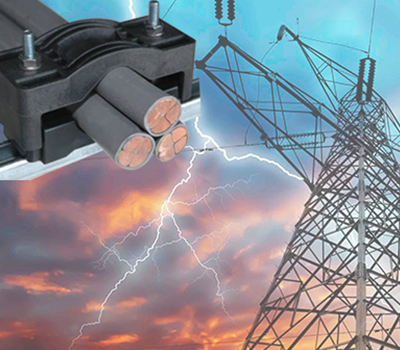Laying down electricity cables is a mission critical activity, not only as it ensures the smooth running of operations but also from the safety and security stand point. It is therefore imperative that a significant aspect of cable installation, the use of cable cleats is not neglected.
Ever so often, cable cleats are considered to be just an added accessory and are often compromised at the altar of cost cutting. The fact, however is that cable cleats are a must have as they are designed as a short circuit protection device. Without the use of cable cleats, the system stands exposed to the risk of damage in cases of a short circuit besides the threat of loss to life.
However, it is important to choose the right cable cleat as different cable cleats can withstand different forces. Not using the right cable cleat can therefore not mitigate the risk of a short circuit. It is not only important to know the specification of a cable cleat but also to delve into it, in detail. This is all the more important as often the choice of a cable cleat is left to a third party certification. For example, if a cable cleat has a quoted short circuit withstand, it is important to know that the level of withstand is valid for a cable diameter equal or greater than the diameter of the cable used in the test. In case the project at hand uses smaller cables, the level of withstand will not hold. The short circuit withstand of a cable cleat, therefore has to be adequately qualified. The need, when it comes to cable cleats is dual- the first is to accord them the status of being an important part of cable installation and the next is to ensure that the right specifications are used. The second really flows from the first- so of cable cleats are recognized to be as important as fuses or circuit breakers, their specification will automatically also assume importance. In fact circuit breakers only interrupt the fault after three or five cycles. On the other hand, if the forces between the cables reach their peak in the first cycle, it is a cable cleat that can come handy provided of course that the cable cleats are of the right specification. In fact the use of the right cable cleat would mean that not just the cleat but also the cable is intact after a short circuit.
Unfortunately, the issue of not using the right cable cleat boils down to its cost. So while the engineer may recommend the right cable cleat, the buyer may reject it on account of its cost. While purely from the budgeting point of view it may make sense not to include a cable cleat, in the long run it can turn out to be a very costly decision both in terms of loss to the entire cable management system and the likely loss to life.
In case of new installations, it is best to begin the process at the design stage itself and determine the type and strength of cleat required. Factors such as the mounting surface, the environment also need to be taken into account in choosing the cleat. For old installations, however, the cabling needs to be reviewed to ensure that it is safely restrained in the first place.
In choosing the right cable cleat while it is important to look for third party certification, it is also important to conduct project specific testing. What is important in the long run is also to have a process of education and also meeting of minds between manufacturers of cable cleats, the regulatory authorities, the specifiers, contractors and all other constituents. This may seem like a tough task as some practices are deeply ingrained into the overall system of specification and installation. This however is not an impossible feat once everyone is sufficiently educated about both the need of the right cable cleat as well as the costly fallouts of not using it.
While most specifiers are very diligent about recommending the right cable cleat, the issue typically begins where the specification is passed on to contractors who bid for the contract. The successful contractor then passes the specification on to the buyer. Since there isn’t too much technical understanding at thus level, the focus automatically shifts to the cost as against the criticality of the cable cleat. The buyer thus lands up complying with legislations but compromising on the system safety in a bid to reduce price. It is this aspect that needs to be worked upon as clearly short circuits come with a whole lot of risks, more so for the end user as also for the installer and any passer by.
 SUBSCRIBE TO OUR BLOG
SUBSCRIBE TO OUR BLOG
